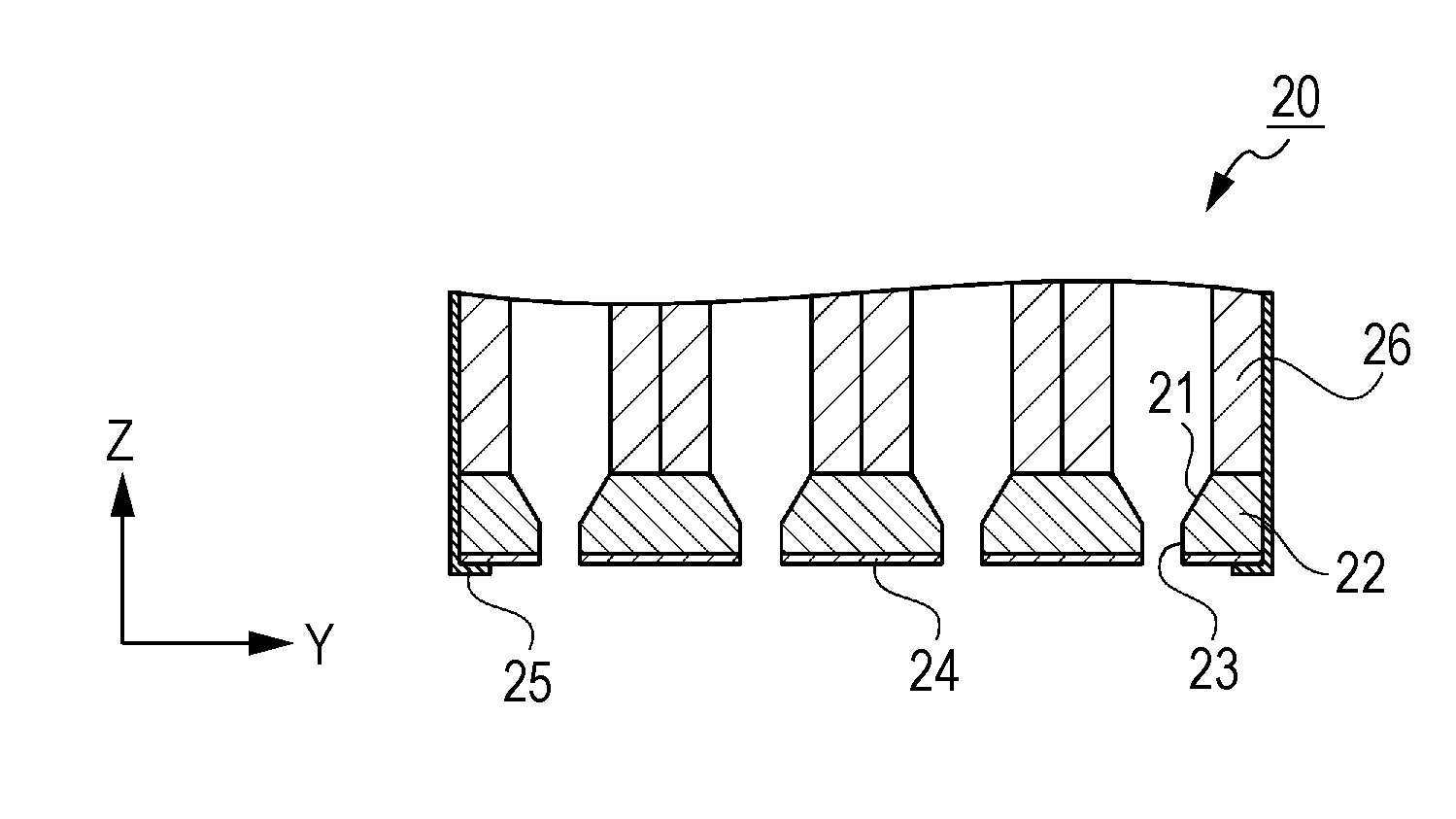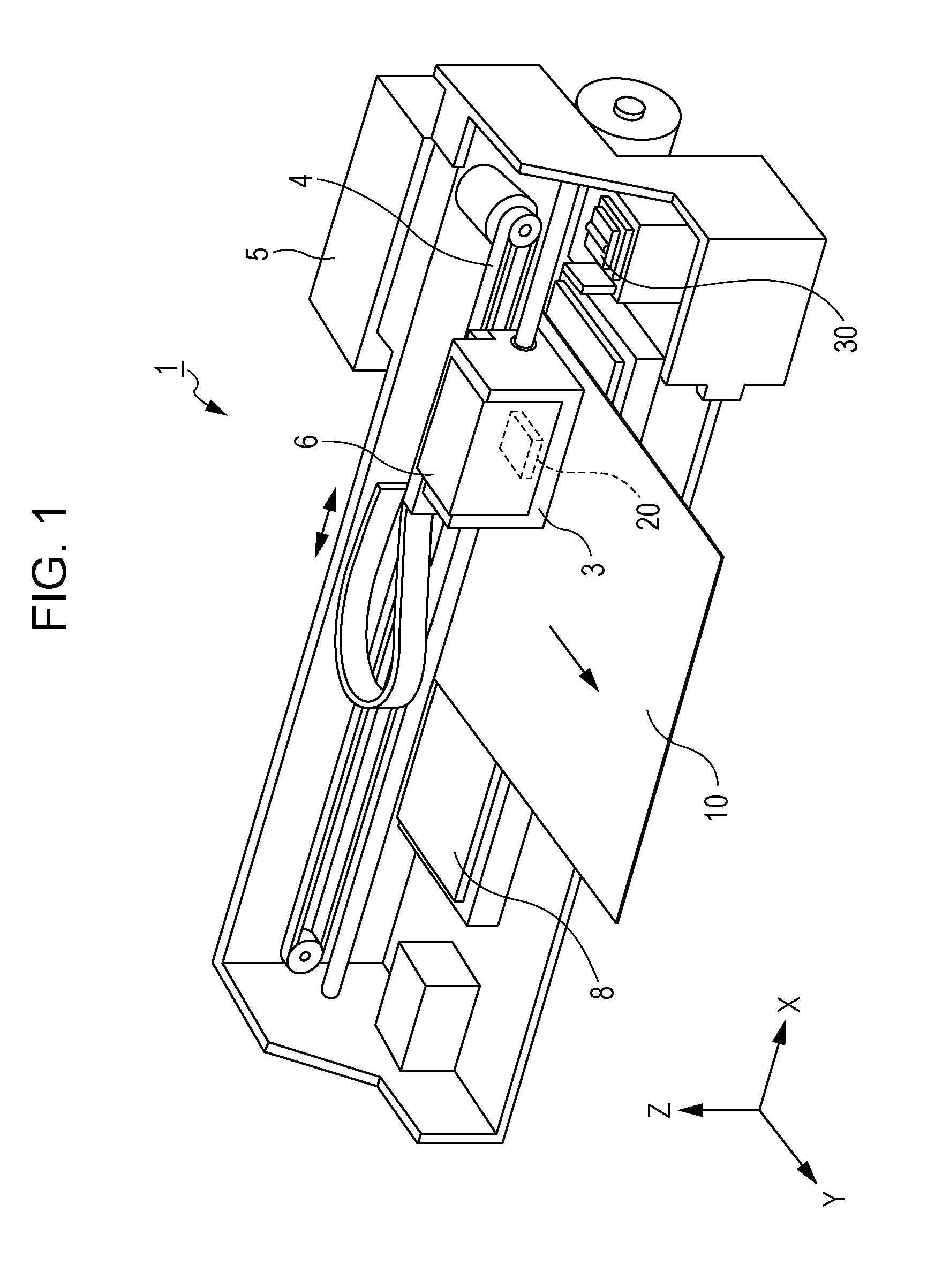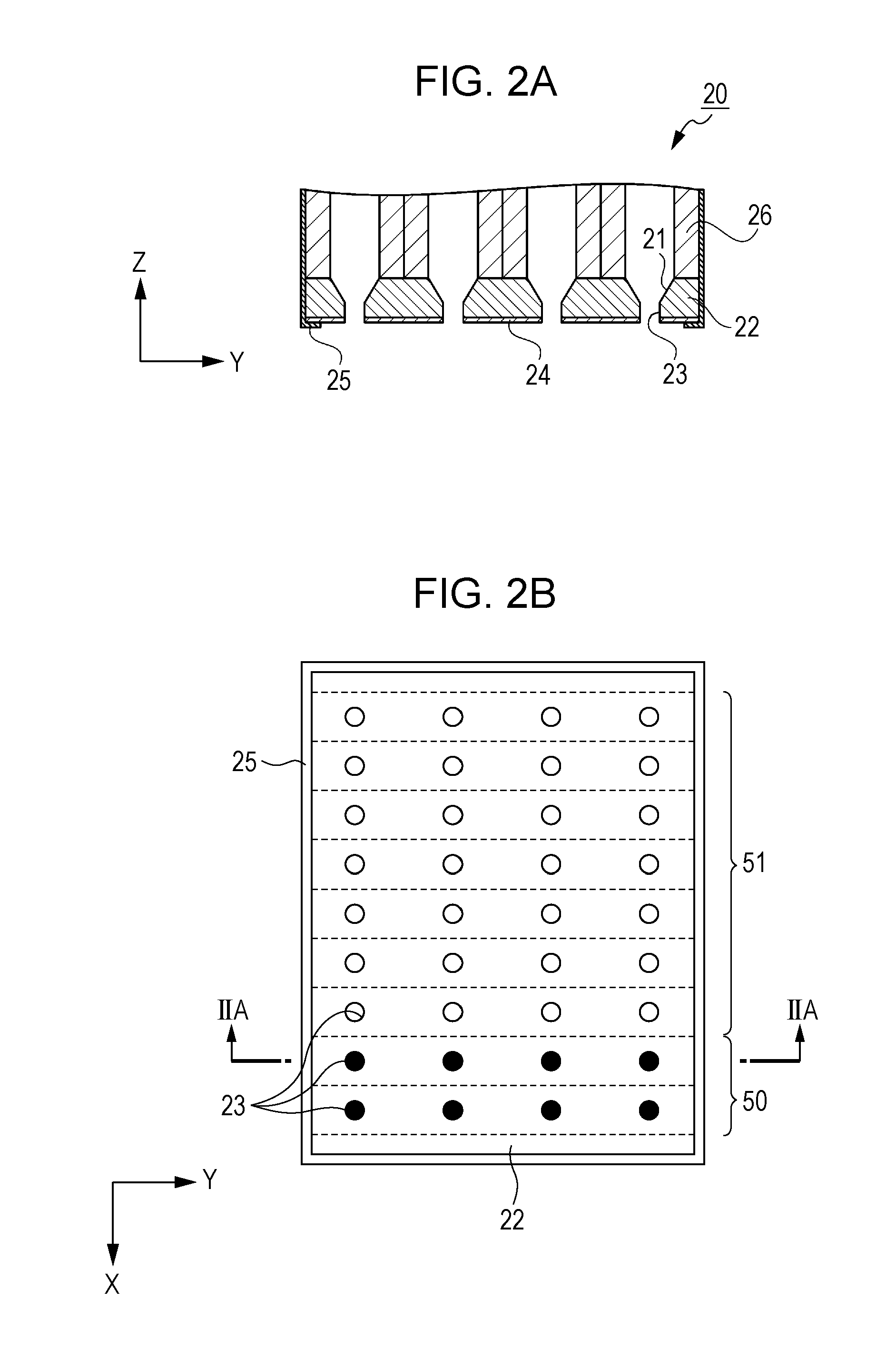Ink jet recording apparatus
a recording apparatus and jet technology, applied in printing and other directions, can solve the problems of affecting the normal discharge of ink, clogging of the nozzle, poor ink discharge, etc., and achieve the effects of suppressing damage to the surface of the nozzle plate, reducing the risk of clogging, and improving image quality
- Summary
- Abstract
- Description
- Claims
- Application Information
AI Technical Summary
Benefits of technology
Problems solved by technology
Method used
Image
Examples
embodiment 1
[0139]In the ink jet recording apparatus 1 according to Embodiment 1, the first discharge port arrays 50 and the second discharge port arrays 51 are arranged in such a manner that the second discharge port arrays 51 are wiped in priority to the first discharge port arrays 50 in a series of the operations in which the surface of the nozzle plate 22 is wiped by the wiping member 31. Hereinafter, a specific description is given.
[0140]FIG. 4A is a plan view of the nozzle plate 22 (hereinafter referred to as a nozzle plate 22a) according to Embodiment 1 as viewed from the discharge port 23 side.
[0141]The nozzle plate 22a has n pieces of the first discharge port arrays 50 and m pieces of the second discharge port arrays 51. On the nozzle plate 22a, n pieces of the first discharge port arrays 50 are continuously arranged on one side (+X side in FIG. 4A) (i.e., n pieces of the first discharge port arrays 50 are continuously arranged from one end portion). On the nozzle plate 22a, m pieces o...
embodiment 2
[0153]Next, an ink jet recording apparatus 1 according to Embodiment 2 is described. In the description, the same constituent portions as those of the embodiment described above are denoted by the same reference numbers and the duplicated description is omitted.
[0154]In Embodiment 2, in n pieces of the first discharge port arrays 50 and m pieces of the second discharge port arrays 51, the number given by n+m is even, k=(n+m) / 2 is established and when the number given by n+m is odd, k=(n+m−1) / 2 is established. In such a case, in a series of the operations in which the wiping member 31 wipes the surface of the nozzle plate 22 in such a manner as to wipe the first discharge port arrays 50 or the second discharge port arrays 51 of the first array to the n+m-th array, the first discharge port arrays 50 and the second discharge port arrays 51 are arranged in such a manner that the first discharge port array 50 of the n-th array is wiped in the range of the k+1-th array to the n+m-th array...
embodiment 3
[0161]Next, the ink jet recording apparatus 1 according to Embodiment 3 is described. In the description, the same constituent portions as those of the embodiments described above are denoted by the same reference numbers and the duplicated description is omitted.
[0162]In Embodiment 3, in n pieces of the first discharge port arrays 50 and m pieces of the second discharge port arrays 51, when the number given by n+m is even, k=(n+m) / 2 is established and when the number given by n+m is odd, k=(n+m−1) / 2 is established. In such a case, in a series of the operations in which the wiping member 31 wipes the surface of the nozzle plate 22 in such a manner as to wipe the first discharge port arrays 50 or the second discharge port arrays 51 of the first array to the n+m-th array, the first discharge port arrays 50 and the second discharge port arrays 51 are arranged in such a manner that the percentage in which the first discharge port arrays 50 are wiped in the range from the first array to ...
PUM
 Login to View More
Login to View More Abstract
Description
Claims
Application Information
 Login to View More
Login to View More - R&D
- Intellectual Property
- Life Sciences
- Materials
- Tech Scout
- Unparalleled Data Quality
- Higher Quality Content
- 60% Fewer Hallucinations
Browse by: Latest US Patents, China's latest patents, Technical Efficacy Thesaurus, Application Domain, Technology Topic, Popular Technical Reports.
© 2025 PatSnap. All rights reserved.Legal|Privacy policy|Modern Slavery Act Transparency Statement|Sitemap|About US| Contact US: help@patsnap.com



